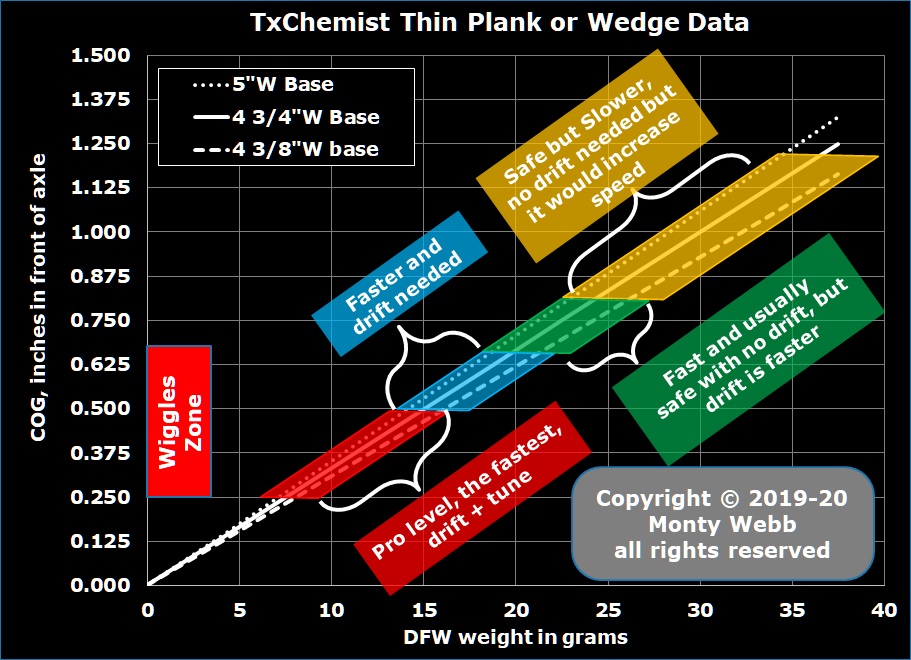PayPal is the preferred payment method.
A Laser cut wood body for the highest speed possible. Pre-sanding weight typically 6.5 grams
Speed comes from finding the best trade off between:
1. Equal weight on the back wheels
2. keep weight on DFW low but not too low.
3. Keep thickness of body to 1/4"
4. Make body as light as possible while still being strong enough to resist any bending or vibration during a run.
Our engineering improvements to the typical laser cut body are as follows:
A. Offset the weight behind the back axle to be closer to the DFW.
B. the front axle is cut with the grain to give a much stronger overall construction and also allow you to set the wheelbase to whatever you want.
C., We laser cut, but leave attached, a 1/16" strip on the DFW side. This allows a solid fit in your drill fixture while drilling the front axle holes, and if desired can be removed to modify the DFW distance from the rail to get the back wheels centered on the rail.
D. The 1/16" strip can be cut with scissors to make two ribs to further enhance the strength of the body. We suggest one right in the nose, and another one mid cavity between the axles.
For best results, lightly sand away the laser burned and hardened wood before drilling or gluing.
The body is made slightly wide to allow for this and then fit in the typical drill jigs.
If you can not push the axle in smoothly with your thumb, put the drill bit in a hand vice and drill to open up more.
If axle is 0.92-0.93 mils, many will follow the #43 drill with a 2.3mm HAND DRILL- caution most drill jigs are made for #43 drill bits- do not use any larger size in them. Use a test small BSA axle first and then move up to a 92 or 93 and do not force, but work the axle in and out to relax the force before inserting your axles.
.
.






Finish up with the smaller bars and/or cubes to bring the weight
up to 5 oz and fine tune COG for speed and stability

Typical final placement
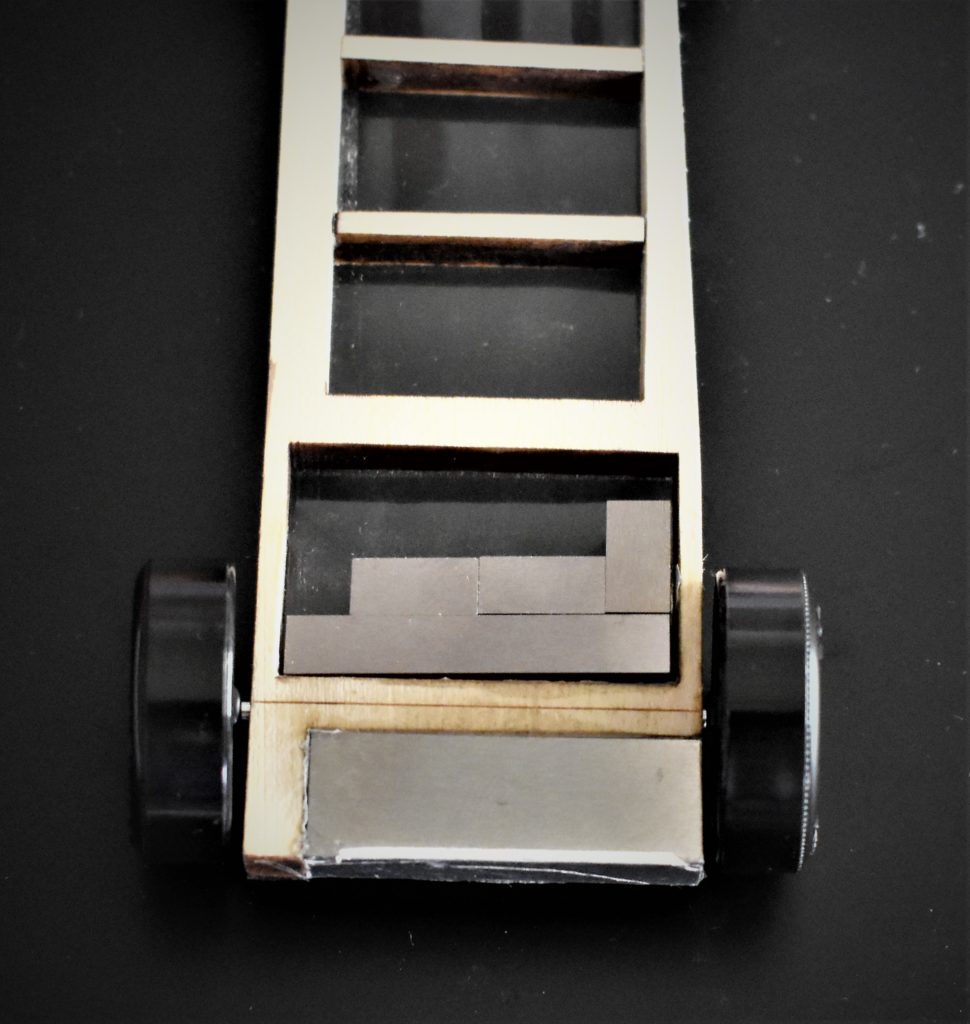 Let's take some data. First let's load up a typical Pro style thin body with enough cubes to get to 5 oz. OK, we
Let's take some data. First let's load up a typical Pro style thin body with enough cubes to get to 5 oz. OK, we needed 26 cubes.

Now, we use TxW 99.95% tungsten bars and find we have achieved the 5 oz. with just 24 cubes of volume when it is the denser tungsten.
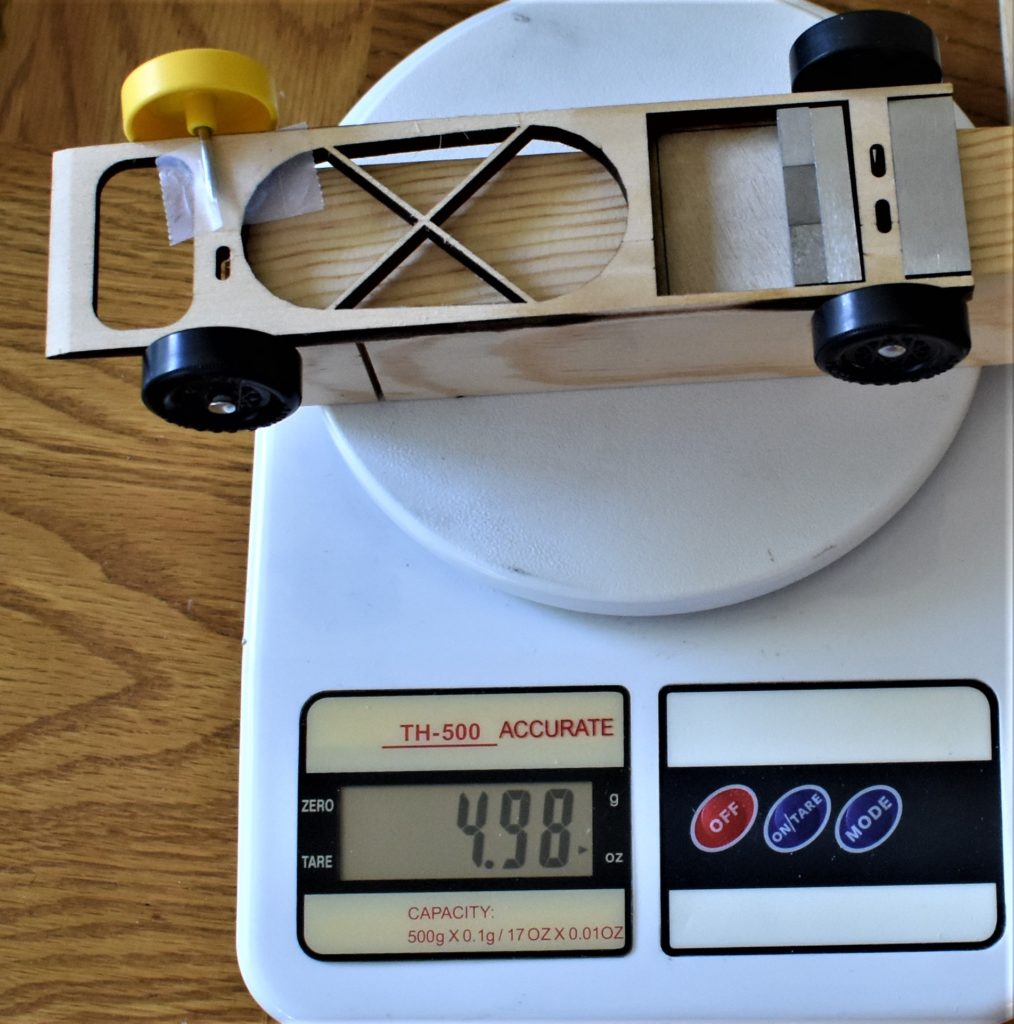
Now let's put our first car on three scales and see what the DFW (Dominant front wheel) weight is, and how much imbalance we have on the back two wheels when the cubes are loaded symmetrically.


We have 12.9 grams on the DFW and one back wheel is 71.6 grams while the other is 56.9 grams. Another way to say that is the imbalance is 14.5 grams.
So after many years, a few clever racers started moving cubes around to see if they could find a "sweat spot" where they got a faster car.
If we move enough cubes to the DFW side, we see that the back imbalance can drop to very low, less than a gram-BUT, the DFW weight went up to 13.89 grams, so with the typical cubes we can improve balance, but it increases the DFW weight- in other words, your COG is slightly worse when you move the cubes and so some racers do not find any additional speed when they look at balance.

Now let's look at the same body, the same wheels & axles, but we use TxW 99.95% tungsten bars to weight the car. We already know we only need 24 cubes of volume, so first we put the bars on to minimize COG.
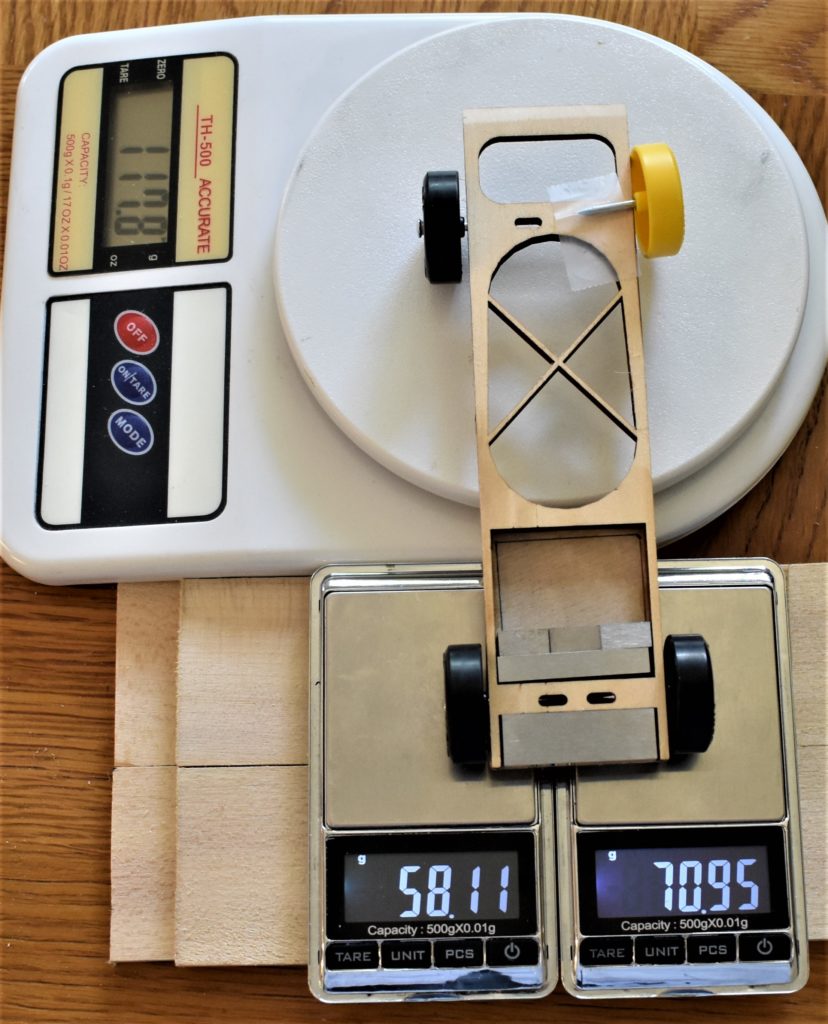

We notice that the imbalance is only 12.9 grams, and bingo! we have reduced the DFW weight to 11.78 grams. This car should be faster than the car with 26 cubes, no matter how those cubes get arranged. Can we get even faster? How about we arrange the smaller bars and look for good balance.


We have an imbalance of only 5 grams, not bad, and what happened to our DFW weight? NOTHING!, If anything it went down a bit. to 11.74 grams.
Yes, this car can go faster than than all the cars above. But if we are clever to move the cubes and bars around in front of the axle to look for improvements- why should we not move the weight behind the back axle to the DFW side and see how it performs? So here is a look at the body that produced the fastest Cub time at the Mid American Pinewood Derby in 2018.
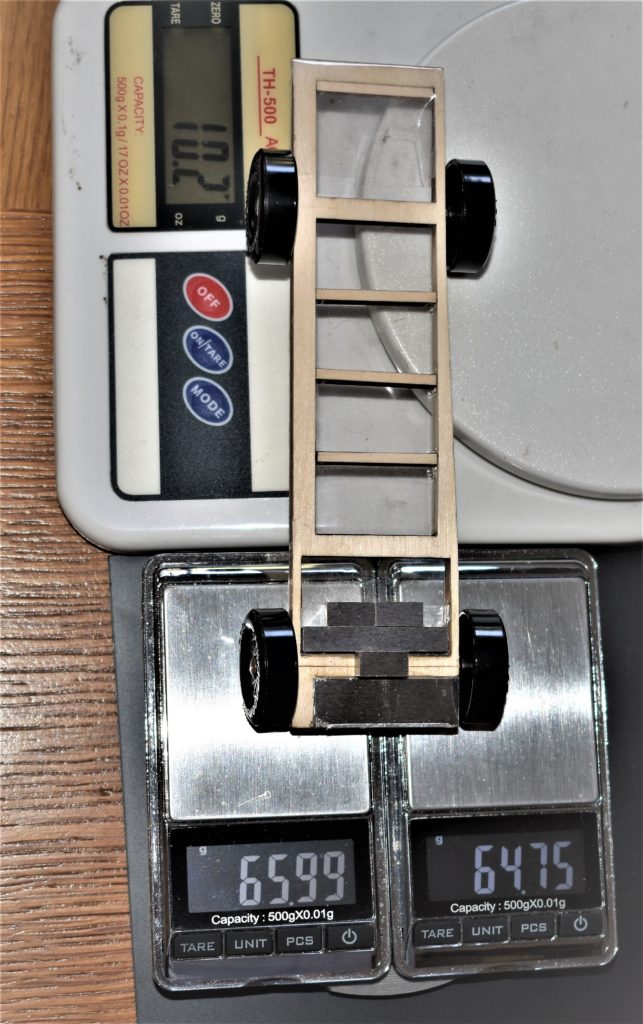

We have imbalance down to just over 1 gram, and the DFW weight is only 10.2 grams. As you can see, we have plenty of room to find the right DFW weight to get maximum speed without degrading our good balance. At least with the combination of TxW weights and the TxW body, the serious racer can find some speed.
Our results are summarized in the following chart

